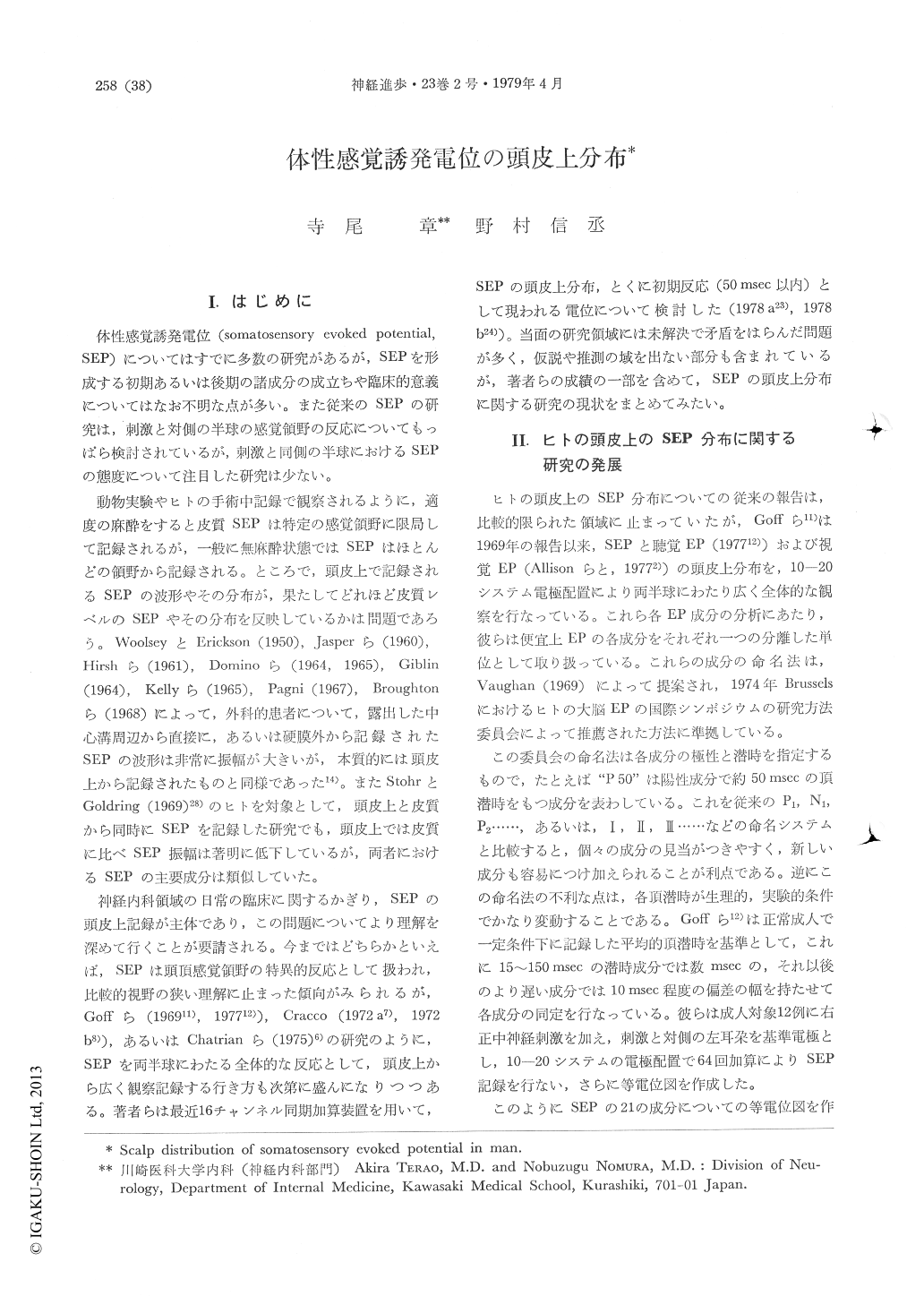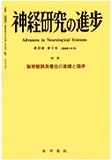Japanese
English
- 有料閲覧
- Abstract 文献概要
- 1ページ目 Look Inside
I.はじめに
体性感覚誘発電位(somatosensory evoked potential,SEP)についてはすでに多数の研究があるが,SEPを形成する初期あるいは後期の諸成分の成立ちや臨床的意義についてはなお不明な点が多い。また従来のSEPの研究は,刺激と対側の半球の感覚領野の反応についてもっぱら検討されているが,刺激と同側の半球におけるSEPの態度について注目した研究は少ない。
動物実験やヒトの手術中記録で観察されるように,適度の麻酔をすると皮質SEPは特定の感覚領野に限局して記録されるが,一般に無麻酔状態ではSEPはほとんどの領野から記録される。ところで,頭皮上で記録されるSEPの波形やその分布が,果たしてどれほど皮質レベルのSEPやその分布を反映しているかは問題であろう。WoolseyとErickson(1950),Jasperら(1960),Hirshら(1961),Dominoら(1964,1965),Giblin(1964),Kellyら(1965),Pagni(1967),Broughtonら(1968)によって,外科的患者について,露出した中心溝周辺から直接に,あるいは硬膜外から記録されたSEPの波形は非常に振幅が大きいが,本質的には頭皮上から記録されたものと同様であった14)。
Abstract
The studies concerning scalp distribution of somatosensory evoked potential (SEP) in man were reviewed, and the followings were summa-rized together with the authors' results.
1. The initial positive potential of the human scalp recorded SEP to median nerve stimulation at wrist is distributed widely over the scalp, and its latency is about 14 msec in Japanese. This potential (P 14) may correspond with p 15 by Goff et al. (1977). P 15 is markedly stable to physio-logical or pathological changes. The latency of P 15 does not change with sleep or anesthesia, and is to be recorded in patients of nearly cerebral death.

Copyright © 1979, Igaku-Shoin Ltd. All rights reserved.


